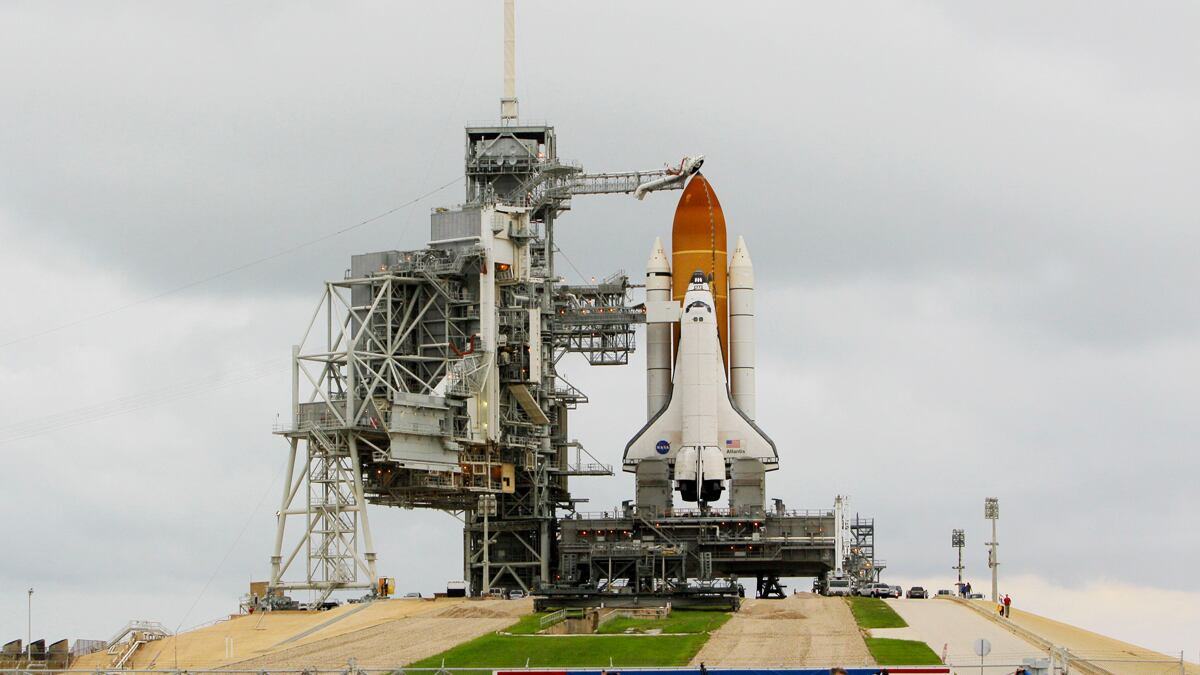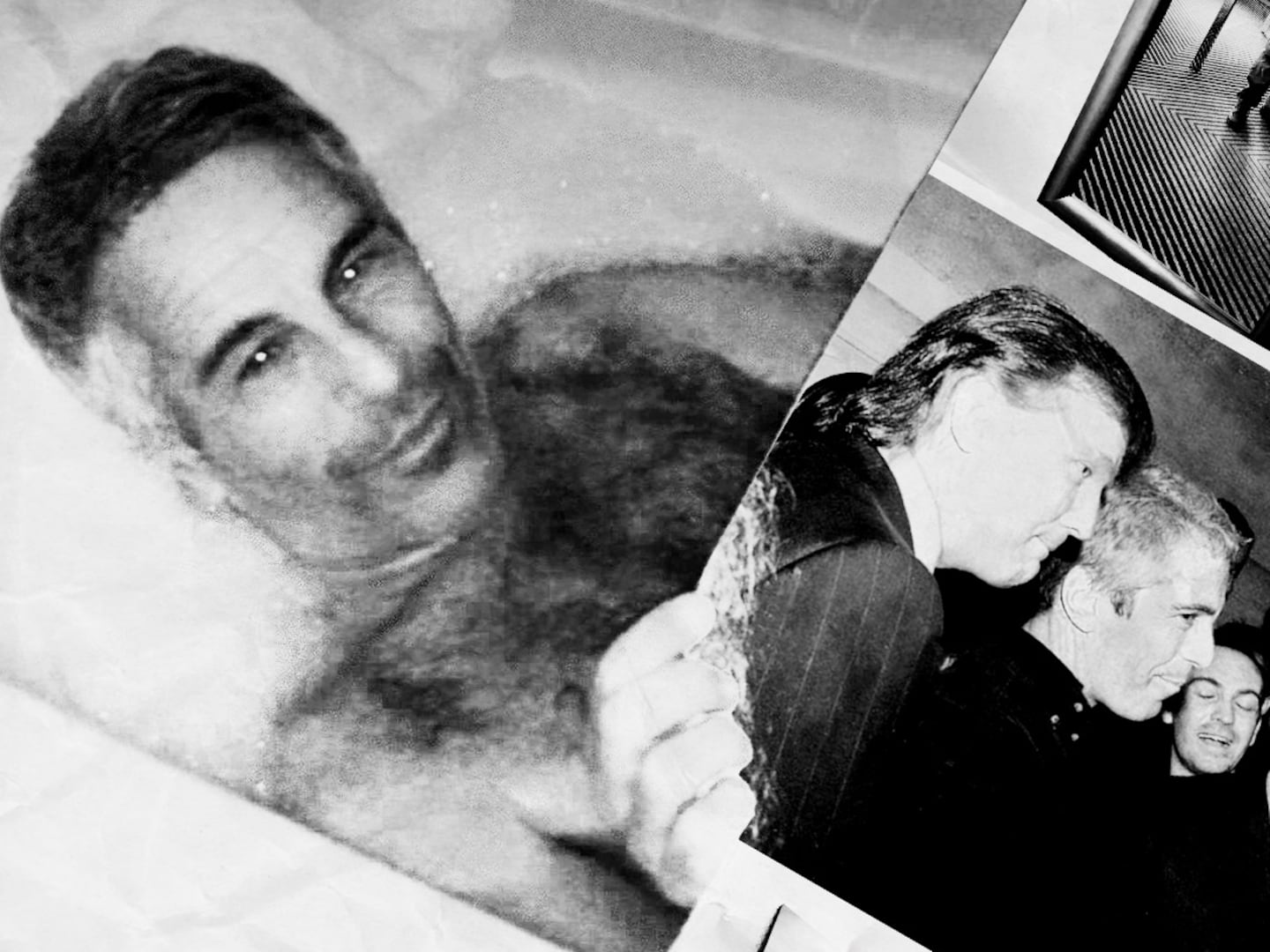When the space shuttle Atlantis blasts off from the Kennedy Space Center today on its final mission, it won’t just be the 30-year history of the world’s only reusable space shuttle that is coming to an end—it will be a whole chapter of the space race. After the shuttle returns to earth in a twelve days’ time, the United States will no longer have a manned space flight program for the first time in five decades. More, for the foreseeable future it will be Russia, the U.S.’s old space rival, which will be the only country in the world regularly putting men and women into space.
“It's in the DNA of our great country to reach for the stars and explore,” Mark Kelly, commander of the penultimate shuttle mission Endeavour, told reporters just before he blasted off in May, watched by his wife, Gabrielle Giffords, the congresswoman who was seriously wounded in a gun attack on Jan. 8 in Tucson, Ariz. “We must not stop.” But the reality is that the shuttle program has been a costly experiment that ultimately failed in its original intention—to create an easily reusable space vehicle that could travel into orbit weekly. Faced with mounting costs and criticism, NASA has pulled the plug after 135 missions and $192 billion.
The demise of the shuttle leaves Russia’s clunkier and more old-fashioned, but ultimately cheaper and more reliable, space technologies in the driver's seat. Back in its heyday in the 1960s, the space race was “really a proxy war of nuclear dominance,” says Piers Bizony, coauthor of Starman: The Truth Behind the Legend of Yuri Gagarin. “Russia and America flaunted their potentially destructive technologies in peaceful camouflage, with every successful mission leading to boasts of supremacy.” Soviet cosmonaut Yuri Gagarin’s manned space flight in 1961 was widely touted as evidence of the superiority of Soviet science, for instance.

Nowadays, spacemen in Russia and America alike have to scramble to raise money. In Russia’s case during the cash-strapped 1990s, it resorted to taking paying tourists aloft and filming ads for Israeli milk and pretzels in the old Mir space station. But in an irony that Nikita Khrushchev, the father of the Soviet space program, would have appreciated, it’s now Russia, with its clunky but functional technologies, that is the last man standing. The décor of Star City, Russia’s astronaut training center near Moscow, may be distinctly Soviet era and the paintwork peeling, “but don’t be fooled,” says Bizony. “Russia won the opening rounds of the space race and is poised to dominate the next stages too.”
As the U.S. scraps its shuttle program and shelves its replacement, Russia’s space agency Roscosmos is forging ahead. Russia sends at least four cosmonaut-carrying capsules and 20 more unmanned cargo launches into space every year. This year the Russian government earmarked $900 million for the building of a new cosmodrome in Blagoveshchensk in Russia’s Far East to replace the old Baikonur base, now inconveniently located in the former Soviet republic of Kazakhstan. Another hundred million dollars is going toward the development of a new rocket, dubbed the Rus, and a new spaceship. Russia is testing a new launcher for satellites, called the Angara, later this year, and it built a new launch pad for its trusty old Soyuz rocket in French Guiana, headquarters of France’s Ariane satellite-launching rocket program.
It’s Russia that is designing a Mars mission lander—and pioneering the human side of a future Mars mission, with volunteers sitting in a mockup of a space capsule in Star City for three years to test systems and psychiatric effects of long-term space travel. “This is the renaissance of Russian space industry,” says former cosmonaut Sergei Krikalev, holder of the world record for time spent in space—803 days over six tours—and now the director of the Gagarin Training Center near Moscow.
Not that NASA, once Roscosmos’ archrival, is completely out of the picture. True, after Atlantis blasts off, space shuttles will no longer take off from Cape Canaveral. But the U.S. still provides a key element for advancing mankind’s reach for the stars: cash. In March NASA signed a new two-year, $753 million agreement with Russia to send American astronauts to the International Space Station through June 2016—almost $63 million per trip. "That's not just for a ride," administrator Charles Bolden is quick to point out, but for two years of "intense" astronaut training, most of it in Moscow. "You used to be able to go into a gas station and get full service ... We get full service from the Russians, old-time full service."
Service is not the only old-school thing about Roscosmos. The secret of the Russian space program’s ongoing success is in doing things simply and well—“if it works, it works,” says photographer Maria Gruzdeva, who was given unprecedented access to Russia’s space installations for a photo book commemorating the 50th anniversary of Gagarin’s flight. “Design is all about simplicity. The same goes for technology. Why reinvent the wheel?” The result is that “Russian technologies have not advanced much from what was invented under [Sergei] Korolev in the 1950s,” says Oleg Ivanovsky, a veteran engineer who designed, tested, and launched the first Sputnik and gave Yuri Gagarin his last hug before helping him into the capsule that was to take him into orbit.
Half a century later, and the Soyuz TMA-21 rocket that took two Russian and one U.S. astronauts to the International Space Station in March is basically the same machine that opened the space age by launching Sputnik and Gagarin (though with the modern-day addition of an Orthodox icon of the Holy Mother of Kazan, donated by the patriarch of Moscow). The Americans, on the other hand, spent billions perfecting new designs—and when they finally worked perfectly, abandoned them and moved on to the next project. The Russian if-its-not-broken-don’t-fix-it approach may not be a winning formula for pushing the boundaries of human knowledge—but it has enabled the creaky Russian space establishment to keep functioning even through the lean years.
The difference in approach has become all the starker as the financial crisis bites in the U.S. Last year President Obama struck a line through plans for the shuttle’s successor, the Orion, and confined NASA to 2010 spending levels. At the same time Russia, at the other end of the world’s commodities see-saw, is flush with cash as oil prices soar. Funding for Roscosmos has increased by nearly seven times in the last decade, from $300 million to $2.1 billion. Though that’s still dwarfed by NASA’s $20 billion annual spending, Russia manages to get much more bang for its buck by paying low salaries—around $1,000 a month for an average space engineer, and $5,000 for an astronaut—and by riding on massive infrastructure left over from the Soviet era.But perhaps the most striking difference between Russia and America is in their attitudes to their respective space programs. NASA’s future is uncertain because “it has not so much been fulfilling a new dream as living in the shadow of an old one,” says Bizony. For most Americans, the space race was won when Neil Armstrong landed on the moon in 1969; “relative to Russians, their interest has waned in the new century,” Bizony adds. For Russia, by contrast, being a major player in the space game remains a point of national pride. Massive festivities were held across Russia for the 50th anniversary of the Gagarin flight last April 12. A Soviet make of space-branded watches called Raketa—worn by Gagarin himself—has been revived as a luxury brand for Russia’s patriotically minded new rich. And when Russia’s space program makes a misstep—such as when three Russian navigational satellites ended up in the Pacific Ocean after technicians overfilled one of the tanks in the rocket’s upper stage last December—the Kremlin very publicly steps in. After the December debacle, President Dmitry Medvedev personally sacked top managers, and earlier this year called for Russia to develop its own space-exploration program for “our nation’s scientific ambitions … if we do not do this, we will fall behind.”But despite Medvedev’s posturing, the truth is that cutting-edge space exploration has become too complex and expensive for any one country to tackle alone. “This is the end of the space race,” says Joel Montalbano, a NASA flight director. “We are all members of one joint team these days.” The International Space Station, for instance, is a joint project between the U.S., Russia, Japan, Canada, and the EU—which last month formally agreed to a €2 billion package to support operations at the ISS until 2020. The ISS’s latest and final addition, for instance, is the “Leonardo” storeroom, designed and manufactured in Italy. China is the exception that proves the rule: rather than cooperating with the ISS, and helping to push the boundaries of space technology, Beijing has chosen to replicate the long-past achievements of other space powers. In 2003 the Shenzhou V mission put a man into orbit, and by 2013 the Chinese hope to land an unmanned probe on the surface of the moon, nearly half a century behind the Soviets who first managed the feat back in 1966.
A manned mission to Mars—the next Holy Grail for serious space explorers—is very much a collaborative effort. In Gagarin’s day, plans were so secret that even the astronauts “did not always know what they were trained for,” says Ivanovsky. Now NASA has an office in Moscow’s Roscosmos, and Roscosmos has their representatives in Houston. The U.S. is focusing on developing a new heavy-lift rocket for deep-space missions, while Russia is concentrating on astronaut training, life support, and physiology for the Mars flight, which would last at least 500 days. A mock-up of a possible Mars lander has been created at the Institute of Medical and Biological Problems in Moscow, and six Russian and European volunteers have been inside it since last summer. The “pilots” have a garden where they grow their own vegetables; the radio signals they receive from the outside world reach them with a four-minute delay, as would happen on the real flight. The participants have already landed on “Mars” and will return to Earth next November, and according to Alexey Krasnov, the director of Human Space Flight Directorate at Roscosmos, they are holding up well psychologically. The next step, says Krasnov, is to repeat the test in real space conditions on board the ISS.
Whatever the politicians say, mankind’s next significant step into the unknown will have to be a worldwide, not just a national, effort. That’s something that has truly changed in the half century since Gagarin first broke the bounds of earth.







